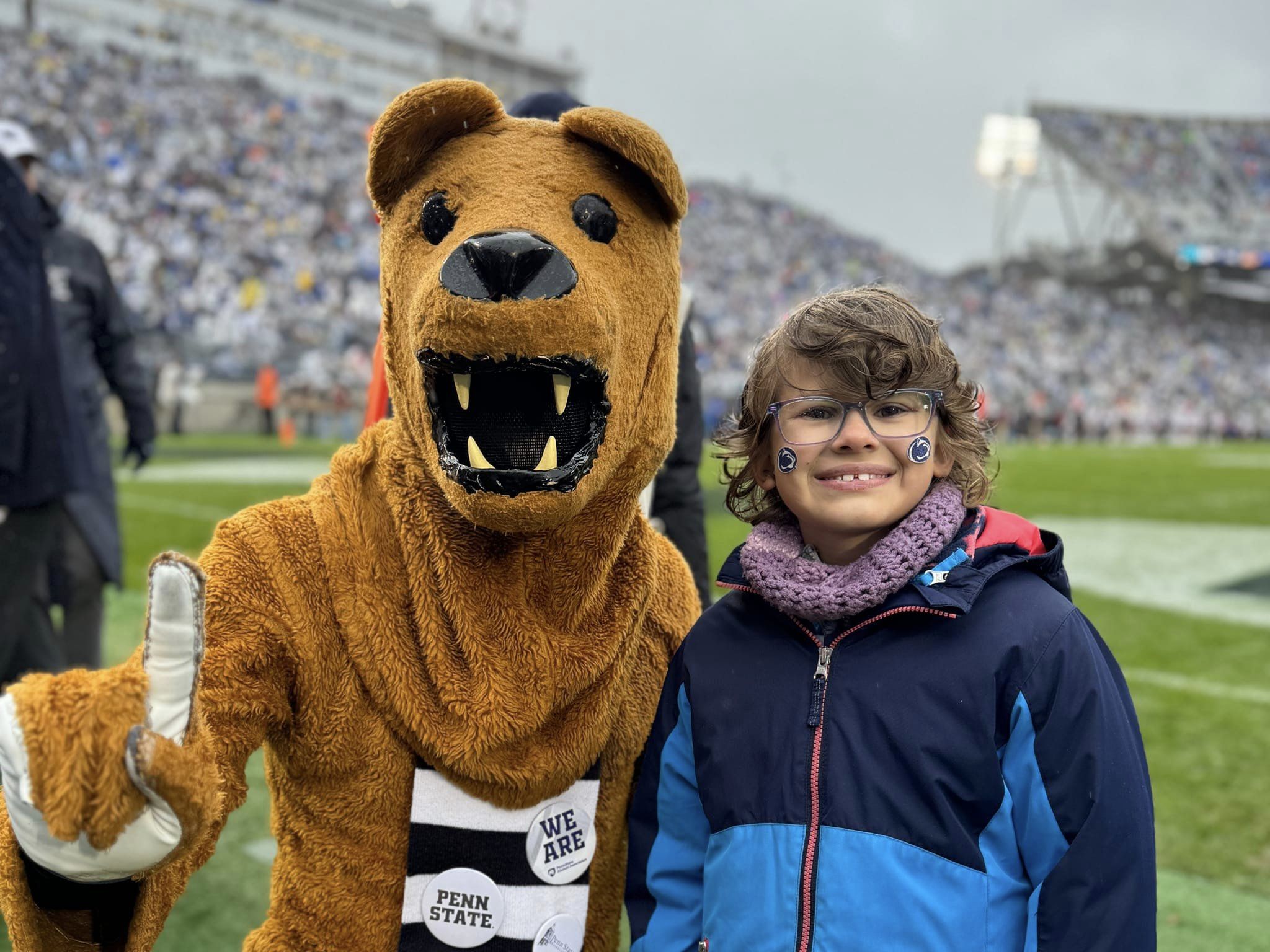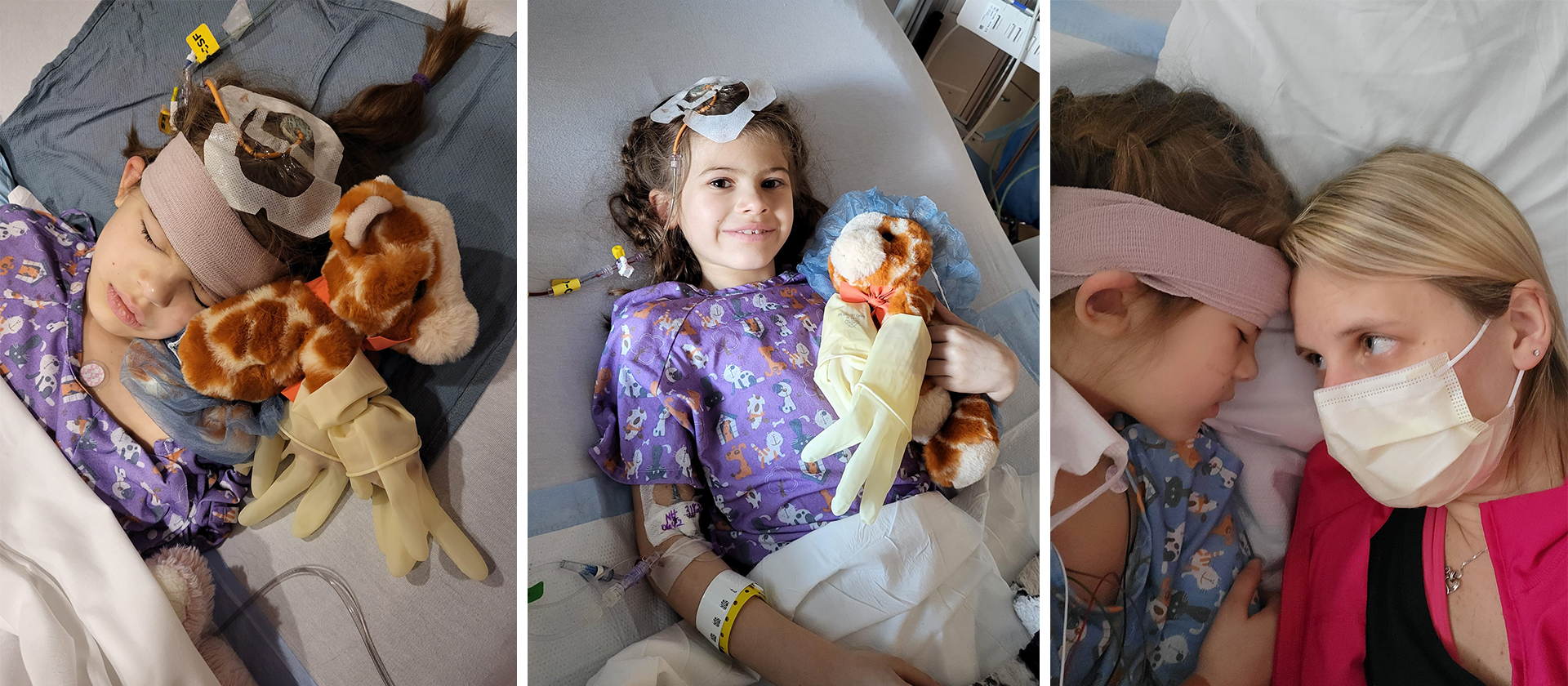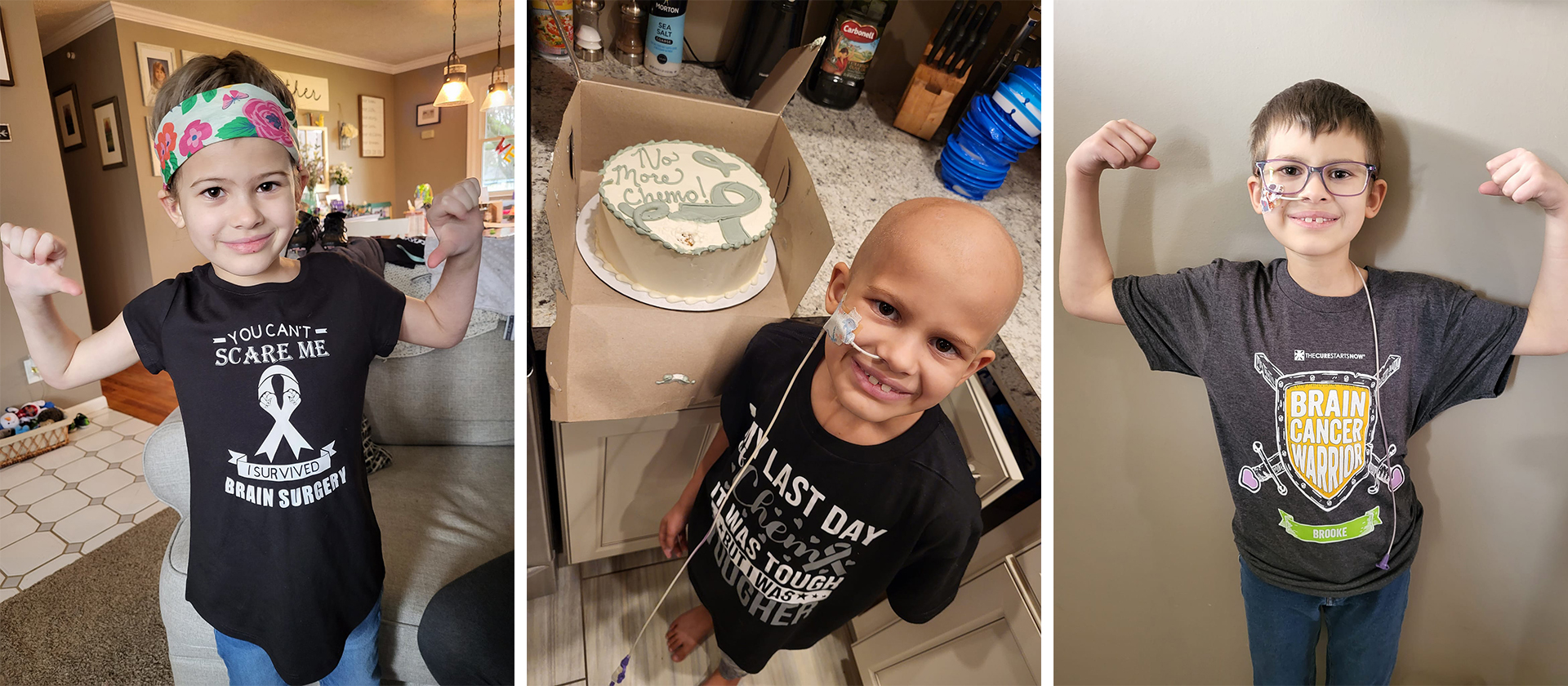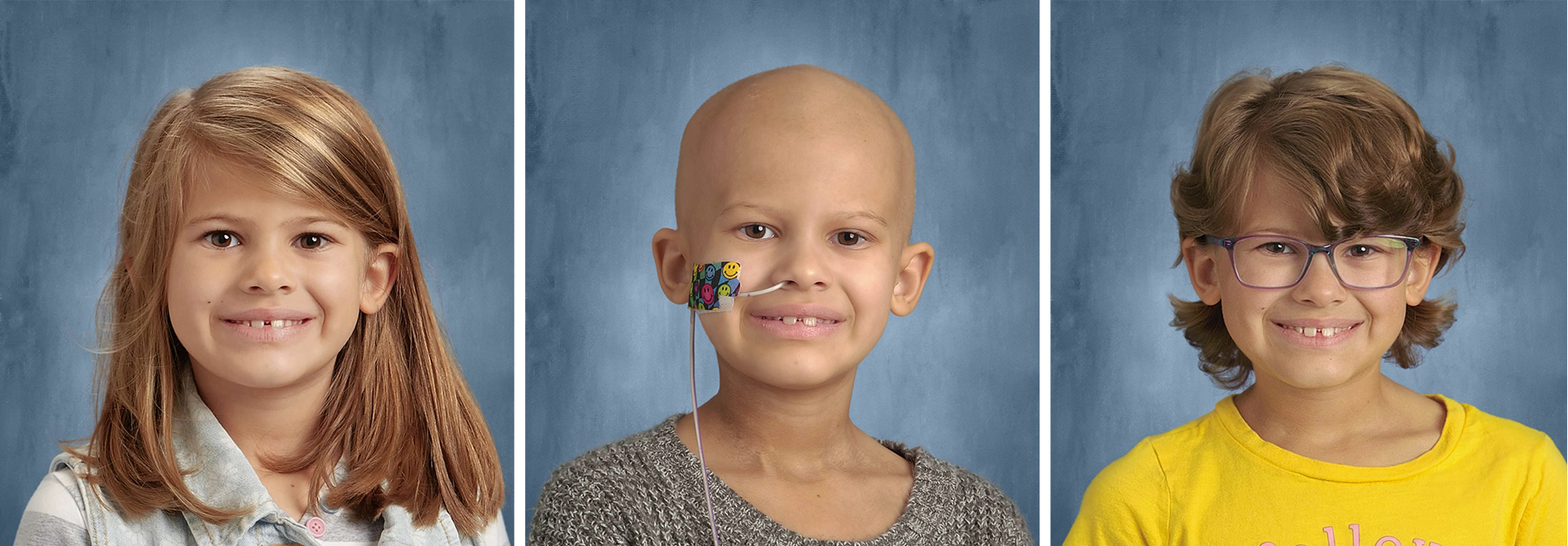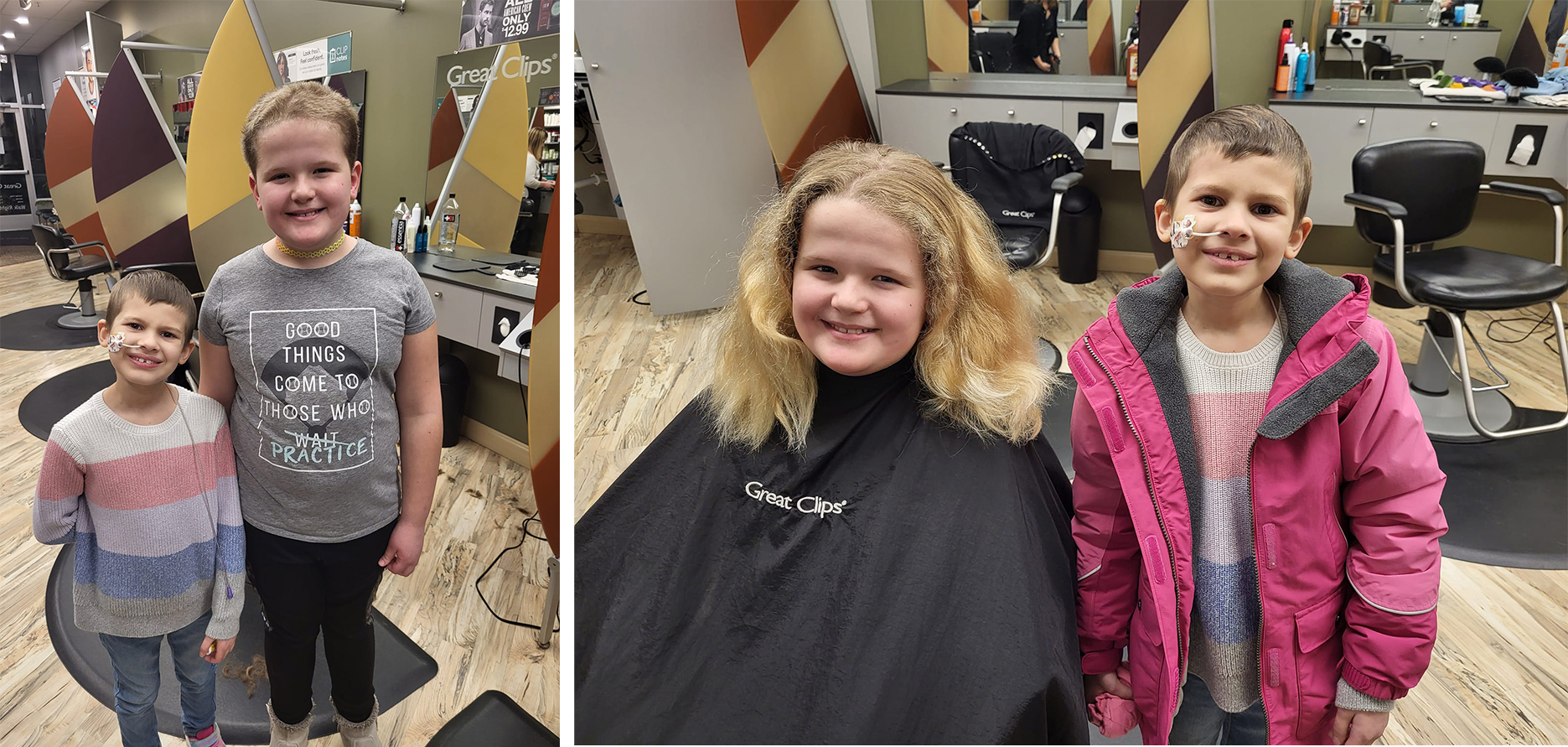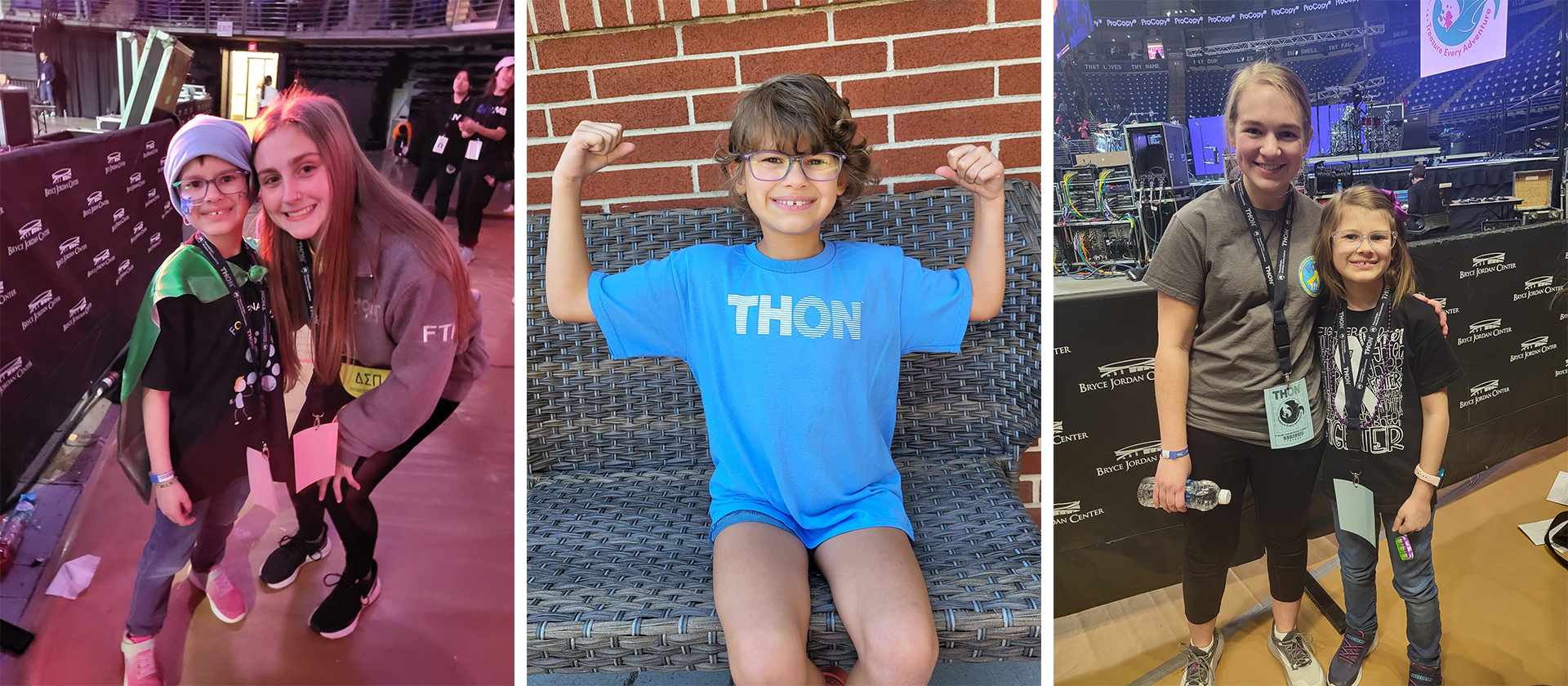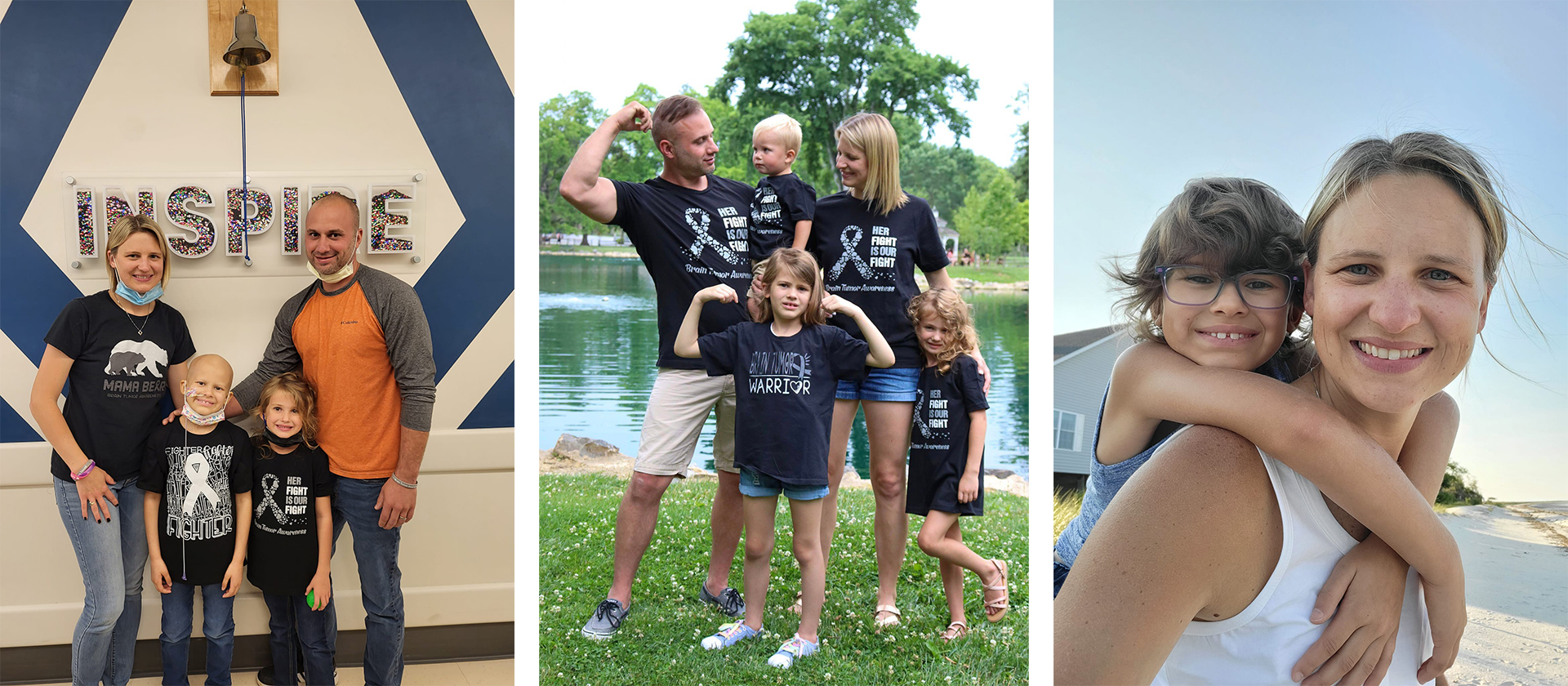Brooke believes in being a helper and making sure that everyone is included. Little did she know that her world was about to turn upside down by childhood cancer, and she was going to be the one who needed some great helpers.
At age eight, Brooke was your average, active kid. She loved gymnastics and was looking forward to her first year of spring soccer. She was always kind, personable, outgoing and energetic.
Discovering Your Child Has Cancer
In January 2022, about a month before her eighth birthday, she started having dizzy spells. They were most apparent while she was in gymnastics class and had to be walked off the floor twice because it wasn’t safe for her to participate. Brooke’s parents first thought it might be dehydration and were now monitoring her water intake more closely.
Not long after the dizzy spells started, Brooke had her regularly scheduled well visit with her pediatrician where there was a concern that she had not gained any weight in the past year. The pediatrician put Brooke on a high calorie diet, which led to vomiting. She gained seven pounds in the short time on the diet, but the vomiting never stopped and became more persistent. A couple of days before what would be the third trip to the pediatrician, Brooke started having sharp pains in her head right before vomiting, then the pains subsided. Brooke’s mom, Samantha, then did what you are always told not to do and ‘Googled’ the symptoms. Her searches told her it might be a brain tumor.
Out of caution, they scheduled a CT scan for the next day. That evening, some of Brooke’s bloodwork came back indicating she had celiac disease, and the thought was this was the cause of Brooke’s medical concerns. However, as a precaution, they did continue with the CT scan, where a brain tumor (ependymoma) was discovered. The family packed three days of clothing and supplies and headed to Penn State Health Children’s Hospital right away.
Brooke’s parents, Samantha and Mike, spent the car ride feeling terrified. “I was scared of not knowing what was going on,” said Mike. “You always feel like you can shield your kids from harm, but not in this scenario.” Brooke was pretty upset as well. “I was feeling really scared,” said Brooke. “I cried all the way to the hospital.”
Neither parent slept that night.
Putting a Childhood Cancer Treatment Into Action
Brooke was moved into care very quickly, which included an MRI. Not long after, a doctor came to talk with them and gave them some ideas of what type of tumor it could be, and some statistics about it. At 5:00 a.m., a drain was placed in Brooke’s brain to release some of the pressure.
The next steps in Brooke’s care were in motion as they met with oncology and neurosurgery, had a repeat spinal MRI and a lumbar puncture. The good news was that both her spine and spinal fluid showed no signs of cancer. The team discussed Brooke’s scans and the risks associated with surgery, where the doctors would attempt to remove the entire tumor. Being the best plan of action, the surgery was scheduled for Monday. Since all of this was scheduled on Friday, it gave Samantha an opportunity to plan an in-patient spa day for Brooke before her surgery.
Brooke’s surgery was successful, and the surgeons were able to remove the entire tumor. A week after, pathology confirmed the tumor was 2 cm x 2.5 cm and had been pushing against her brain stem, causing a buildup of cerebrospinal fluid. The surgery was followed by two weeks in the pediatric intensive care unit, and then a transition to pediatric rehab, where Brooke needed to work on her balance, vision and swallowing.
The day finally came for Brooke to go home, but the next phase in her treatment was about to begin. Brooke endured 33 rounds of radiation, Monday through Fridays. After she completed the radiation treatments, she had four rounds of three-week-long in-patient chemotherapy. The chemotherapy treatments caused Brooke many fevers, and she was often neutropenic, a condition where you have a low number of white blood cells called neutrophils in your blood. “The medicine also made my stomach upset,” said Brooke. “Whenever I ate, I really didn’t feel well, unless it was a very small amount of food.”
Helping the Helper
Brooke’s tumor was found in mid-March, and she was out of school the rest of that year. She started going back to school two days a week in October, and not back to full-time until after winter break. “The days were really tiring,” said Brooke. “But I was happy to be back in school and see all my friends again.”
Brooke was feeling embarrassed with her hair loss and having a NG (feeding) tube. No kid wants to feel different in school. She was lucky to have a great friend named Cidney. Cidney didn’t want Brooke to feel alone and wanted to make things less scary for her friend and decided to shave her head. “It felt really good that she did that for me,” said Brooke. “I am pretty lucky.”
In January of 2024, Brooke had some follow-up scans and there was no evidence of disease. Prior to that a couple spots had shown up on her scans, but they ended up being scar tissue from the radiation. When there were thoughts that the cancer could be back, Brooke felt some fear, but said, “if it happens again, I will be more prepared.”
Four Diamonds made sure that Brooke was well taken care of and gave her so many things to look forward to while she was being treated at Penn State Health Children’s Hospital. Child life would often bring Pilot, a member of the Penn State Health Facility Dog Program, to be with her during procedures, and helped her to feel brave. She also made a bow and arrow out of COVID-19 swabs with our art therapist. The staff always made sure she was well taken care of, especially their social worker.
The Impact of Four Diamonds and Penn State THON For Families Facing Childhood Cancer
They met with Heather, their Four Diamonds social worker, for the first time when Brooke was in pediatric rehabilitation after her surgery. After settling in, Heather told them about Four Diamonds and that they would not see any bills for Brooke’s cancer care. “You don’t think about the financial burden the first couple days because you are so focused on how your child’s life has just changed,” said Samantha. “Then you start thinking about the impact. You have a mortgage, a car, and three children.” After Heather told them Four Diamonds had them covered, it took a huge weight off the family’s shoulders. “It really was a relief,” said Mike. “We knew we would do whatever it would take to care for Brooke and figure things out after. Because of Four Diamonds, we could just focus on getting Brooke better.”
Brooke and her family are so thankful to Four Diamonds, and Penn State THON. “They make you feel so united, and less alone,” said Samantha. “They help you connect with other families like you, and you feel so supported.”
Words of Wisdom from a Brain Tumor Survivor
Today, Brooke is surviving, thriving and free of cancer. When asked for some advice that she would give to other children facing childhood cancer, she replied: “Get lots of rest, and bring lots of fun activities and other things to make the days go faster. I brought stuffed animals that made me feel better too. Lastly, make sure you ask for Child Life when you are feeling down, or ‘under the clouds.’”
To learn more about how Four Diamonds helps families like Brooke’s while facing childhood cancer, click here.

